

Navy Pier
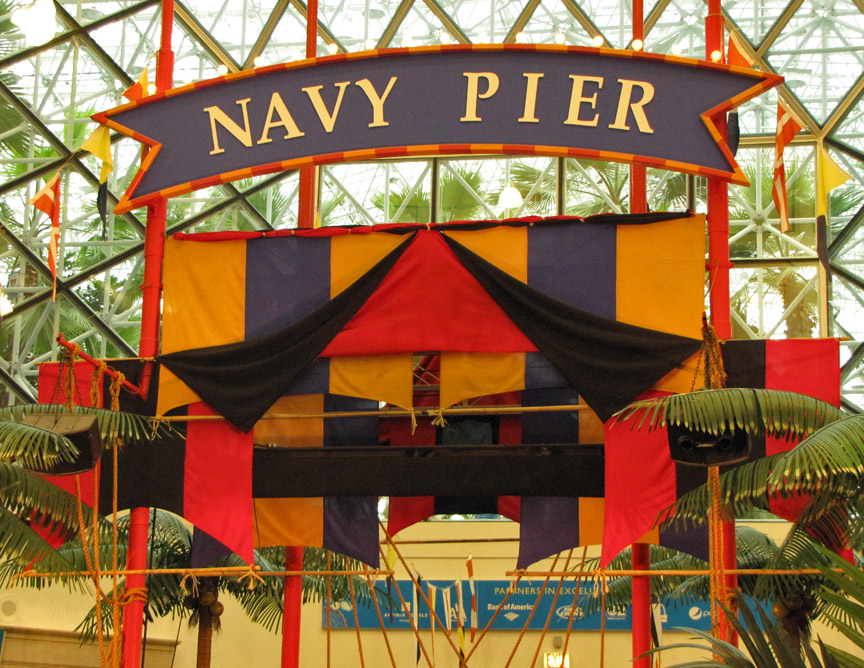
Navy Pier
Navy Pier is a 3,300-foot (1,010 m) long pier on the Chicago shoreline of Lake Michigan. The pier was built in 1916 at a cost of $4.5 million, equivalent to $90 million today. It was a part of the Plan of Chicago developed by architect and city planner Daniel Burnham and his associates. As Municipal Pier #2 (Municipal Pier #1 was never built), Navy Pier was planned and built to serve as a mixed-purpose piece of public infrastructure. Its primary purpose was as a cargo facility for lake freighters, and warehouses were built up and down the pier. However, the pier was also designed to provide docking space for passenger excursion steamers, and in the pre-air conditioning era parts of the pier, especially its outermost tip, were designed to serve as cool places for public gathering and entertainment. The pier even had its own streetcar. It was known as a romantic spot for young lovers.
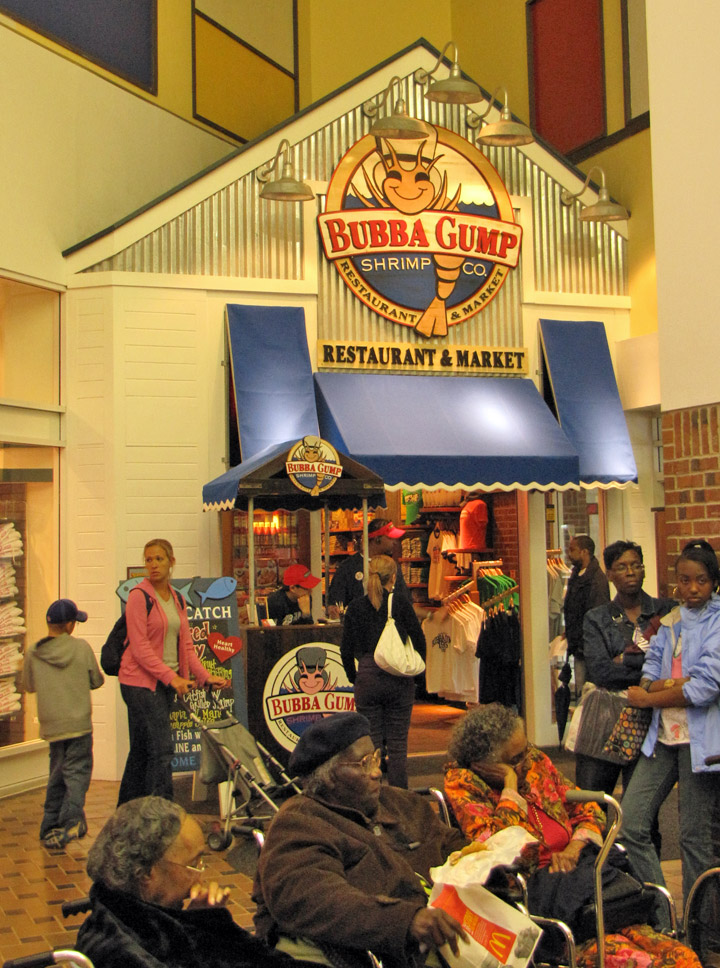
Even as Chicago Municipal Pier was being built, the invention of mass-produced
cars and trucks was beginning to wreak havoc on the package freight and
passenger steamboat industries of Lake Michigan. The pier proved to be much more
successful as a public gathering place. By the late 1930s, the pier was
described as a summer playground with recreational facilities that included
picnicking areas, dining pavilions, a dance hall, auditorium, and children's
playground. During the 1950s, it is estimated that an average of 3.2 million
visitors frequented the pier annually, with peak attendance for the "Pageant of
Progress". This decade is sometimes called the pier's "Golden Age".
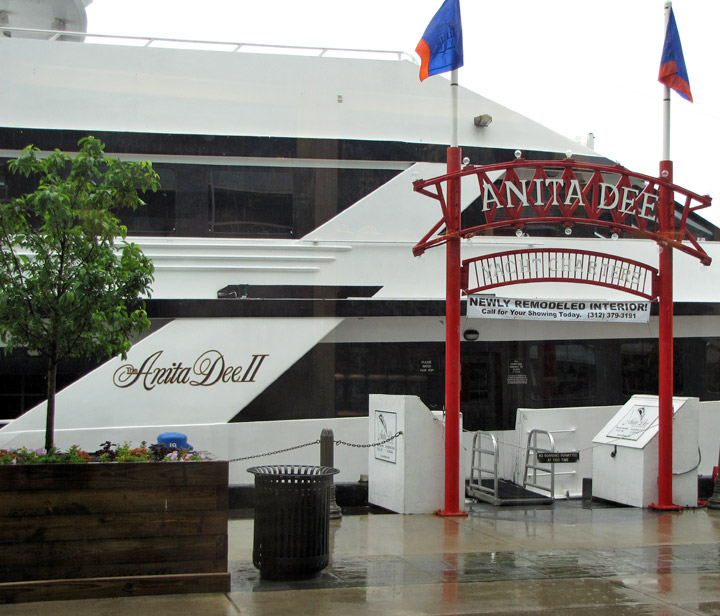
no one taking a lake cruise on a rainy day
The use of the pier for serious marine purposes reached a temporary peak during World War II, when the city leased the pier to the U.S. Navy. The Navy's air group training arm made the pier a quay for a pair of converted flattops, the U.S.S. Wolverine and the USS Sable (IX-81), which were used as freshwater trainee carriers. At this time, 60,000 sailors as well as 15,000 pilots including future President George H. W. Bush, used this area for training. In honor of this service, Chicago Municipal Pier's name was changed to Navy Pier.
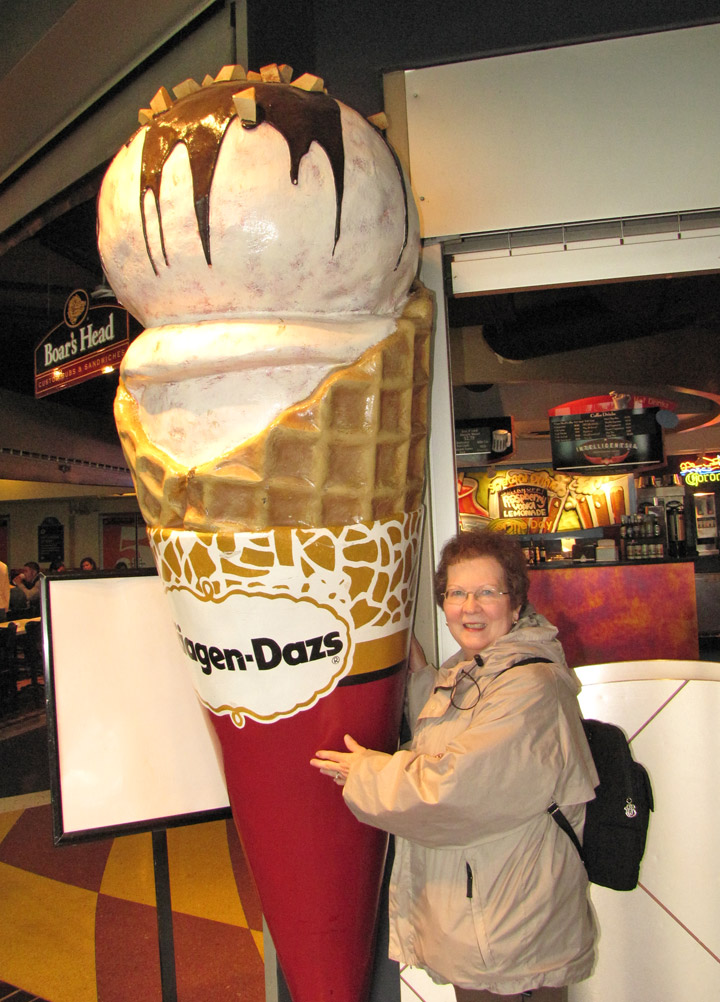
Please ! a big cone
With the war over, Navy Pier went to the University of Illinois, which used the
facility beginning in 1946 for a two-year undergraduate program to educate
returning veterans. During its University of Illinois days, Navy Pier was also
the site of a string of public events. The International Exhibitions of the
early 1960s drew attractions from around the world, including circus and
folkloric dance acts, arts and crafts, and international cuisine. In 1965, the
University moved to the Chicago Circle campus, and the pier again fell into
disuse.
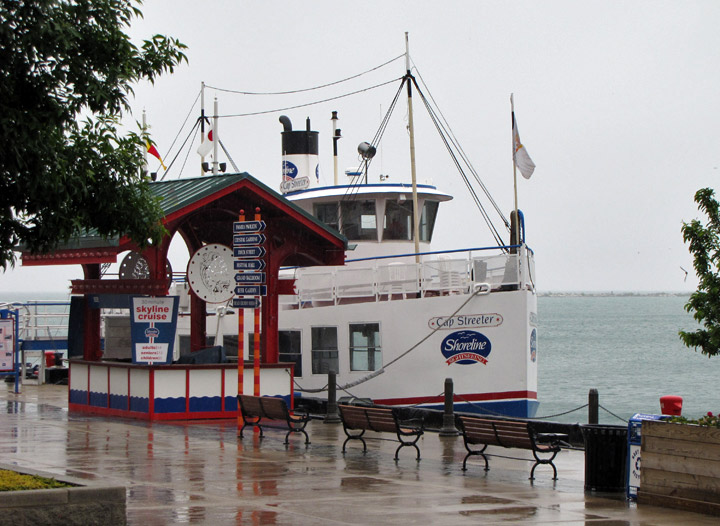
From 1965-1989, Navy Pier was considered an underutilized eyesore. No government
agency in or around Chicago wanted to invest money in it. Many advocates,
inspired by the Plan of Chicago and the pier's successful use as a public
gathering place in the 1920s, called for its reconstruction.
In 1976, Navy Pier began its third life as an area for public exhibits, when the
East Buildings (furthest into Lake Michigan) were opened as exhibition halls.
Special events including music and arts festivals began to draw crowds to the
pier despite its aging infrastructure.
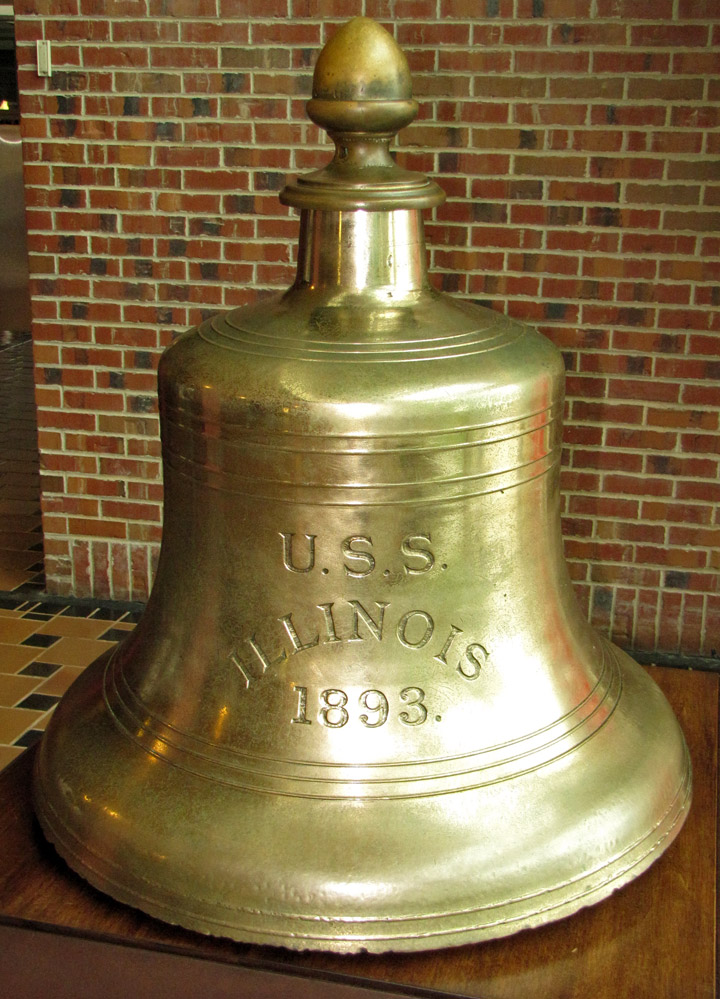
bell from U.S.S. Illinois
From 1979 to 1987, a submarine, the USS Silversides, was docked at Navy Pier.
In 1989, the Metropolitan Pier and Exposition Authority took control over the
pier. Major renovation and construction followed in the 1990s at a cost of
US$200 million. As rebuilt in the 1990s, the pier's layout included fast-food
kiosks, shops, a ballroom, a concert stage, and convention exhibition halls.

Photos of the Stained Glass windows in the Smith Museum
Centerpiece attractions include a 150-foot (46 m)-tall Ferris wheel, an IMAX
theater, the Chicago Shakespeare Theater, Amazing Chicago's Funhouse Maze, the
Chicago Children's Museum, the Smith Museum of Stained Glass Windows, and at the
entrance to Navy Pier is a statue of Oak Park comedian Bob Newhart, sponsored by
the TV Land network.

The pier now features a large front lawn showcasing numerous larger-than-life
public art sculptures and an interactive animated fountain created by WET (of
Fountains of Bellagio fame). The pier continues to be used as an embarkation
point for tour and excursion boats. One of its most popular yearly attraction is
the tall ships Venetian Night festival.
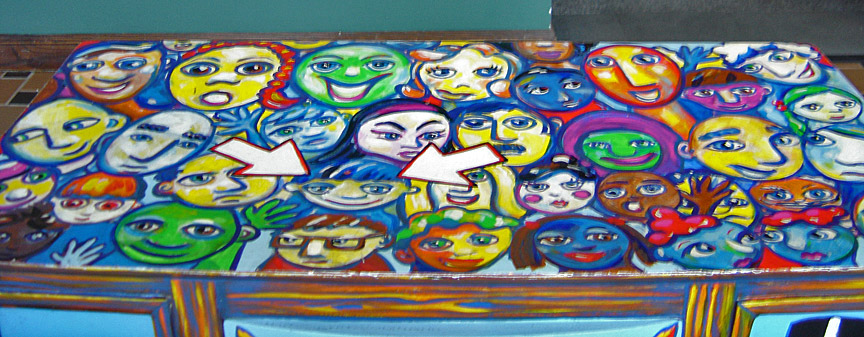
The pier and its grounds encompass more than 50 acres (200,000 m2) of parks,
gardens, shops, restaurants and other shore entertainment. Navy Pier contains
170,000 total square feet of exhibition space, 50,000 square feet (5,000 m2) of
reception space and 48,000 square feet (4,500 m2) of meeting room space.
Text from Wikipedia